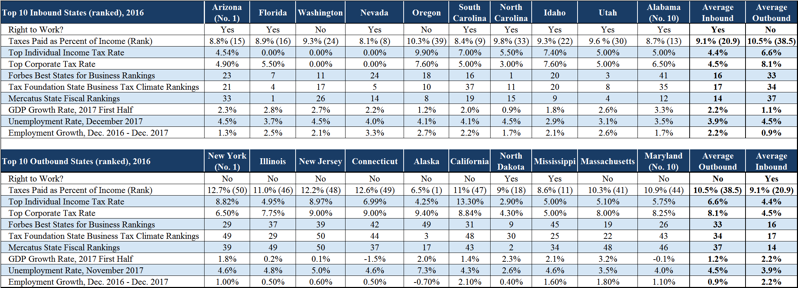
Bottom Line: Based on state-to-state migration data from the Census Bureau for 2016, the migration patterns of US households followed predictable patterns, like my previous analysis, reflecting differences among states in economic growth, tax burdens, business climate, labor market robustness and fiscal health. To answer the questions posed above, therearesignificant differences between the top ten inbound and top ten outbound states when they are compared on a variety of measures of economic performance, business climate, tax burdens for businesses and individuals, fiscal health, and labor market dynamism. There is empirical evidence that Americans do “vote with their feet” when they relocate from one state to another, and the evidence suggests thatAmericans are moving from states that are relatively more economically stagnant, fiscally unhealthy states with higher tax burdens and unfriendly business climates with fewer economic and job opportunities,to fiscally sound states that are relatively more economically vibrant, dynamic and business-friendly, with lower tax and regulatory burdens and more economic and job opportunities.